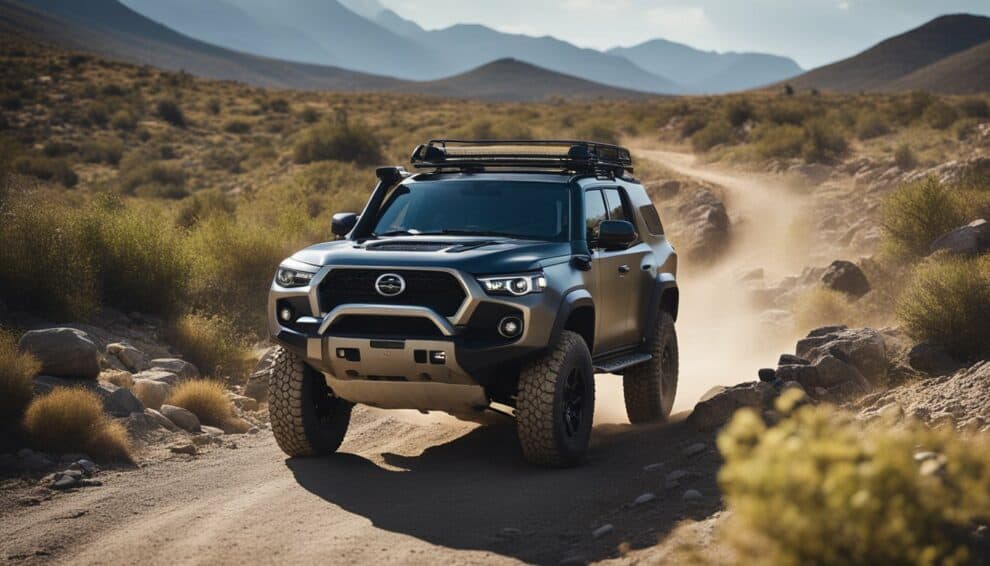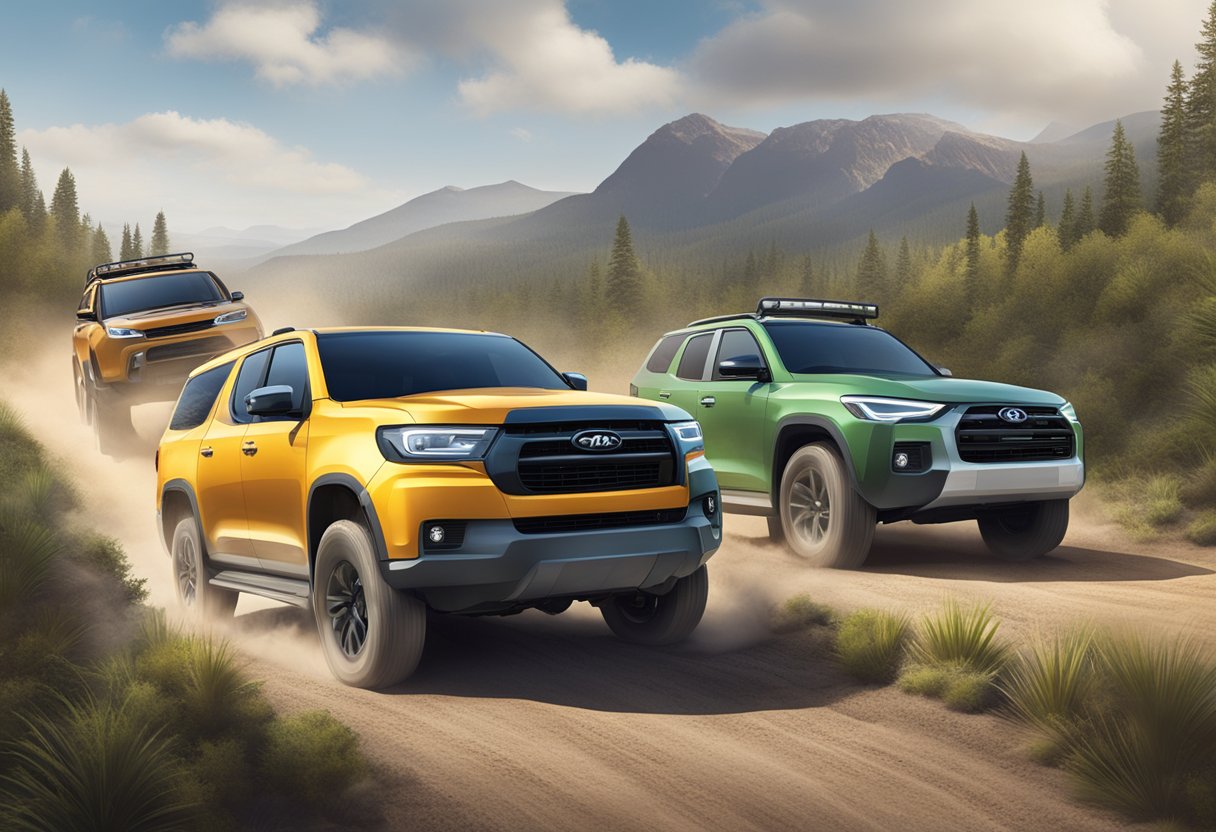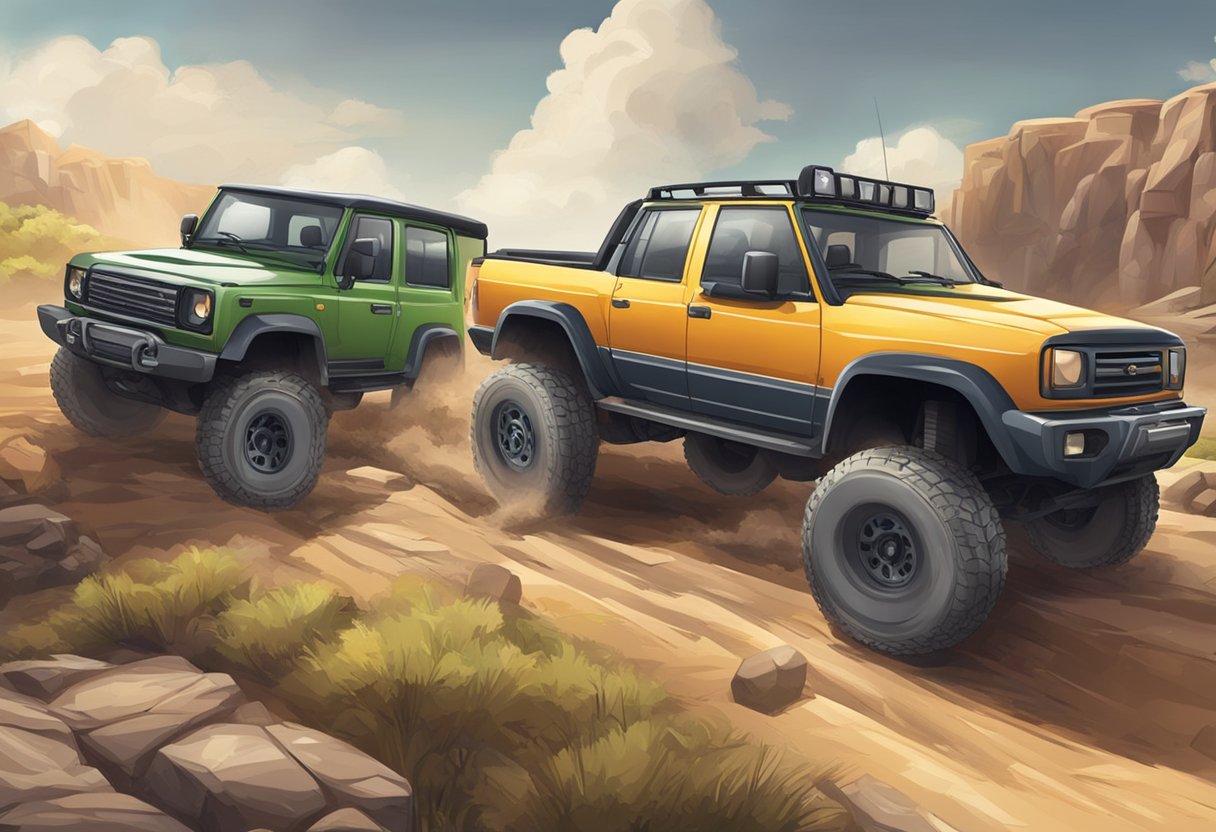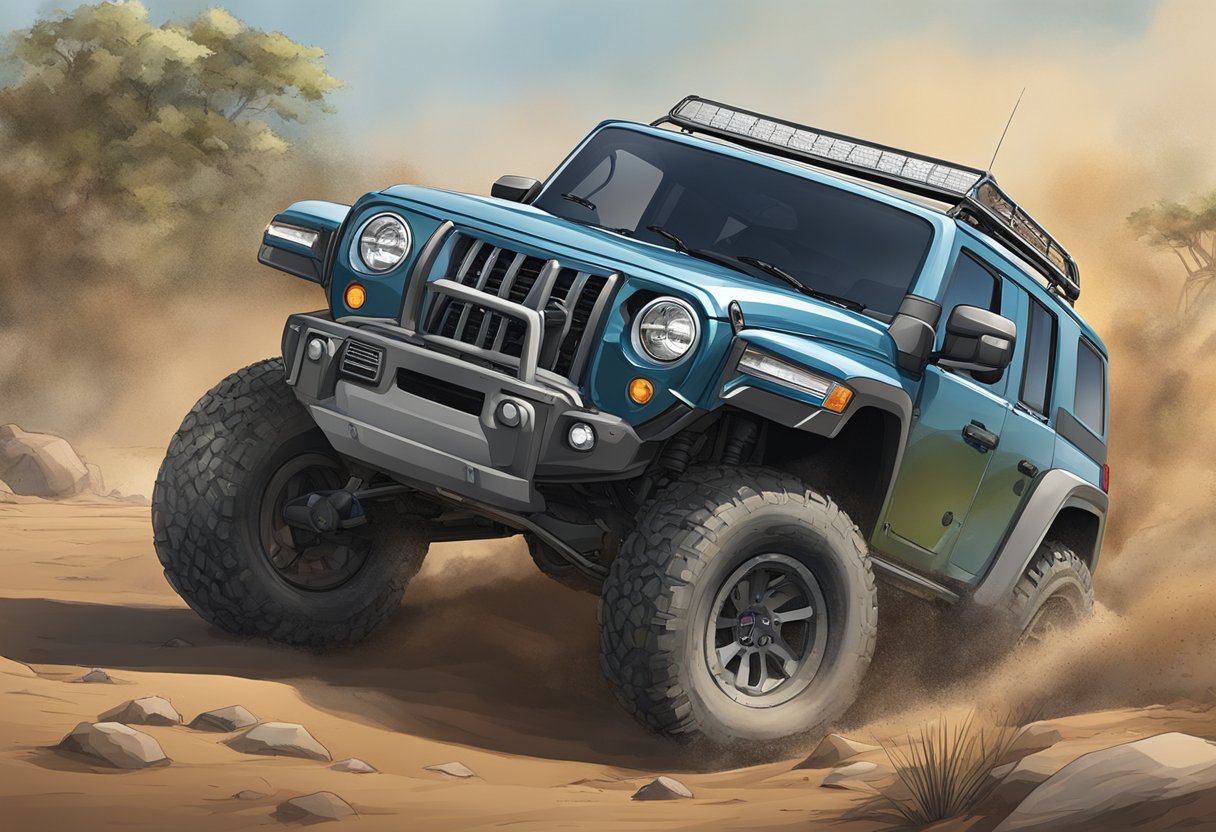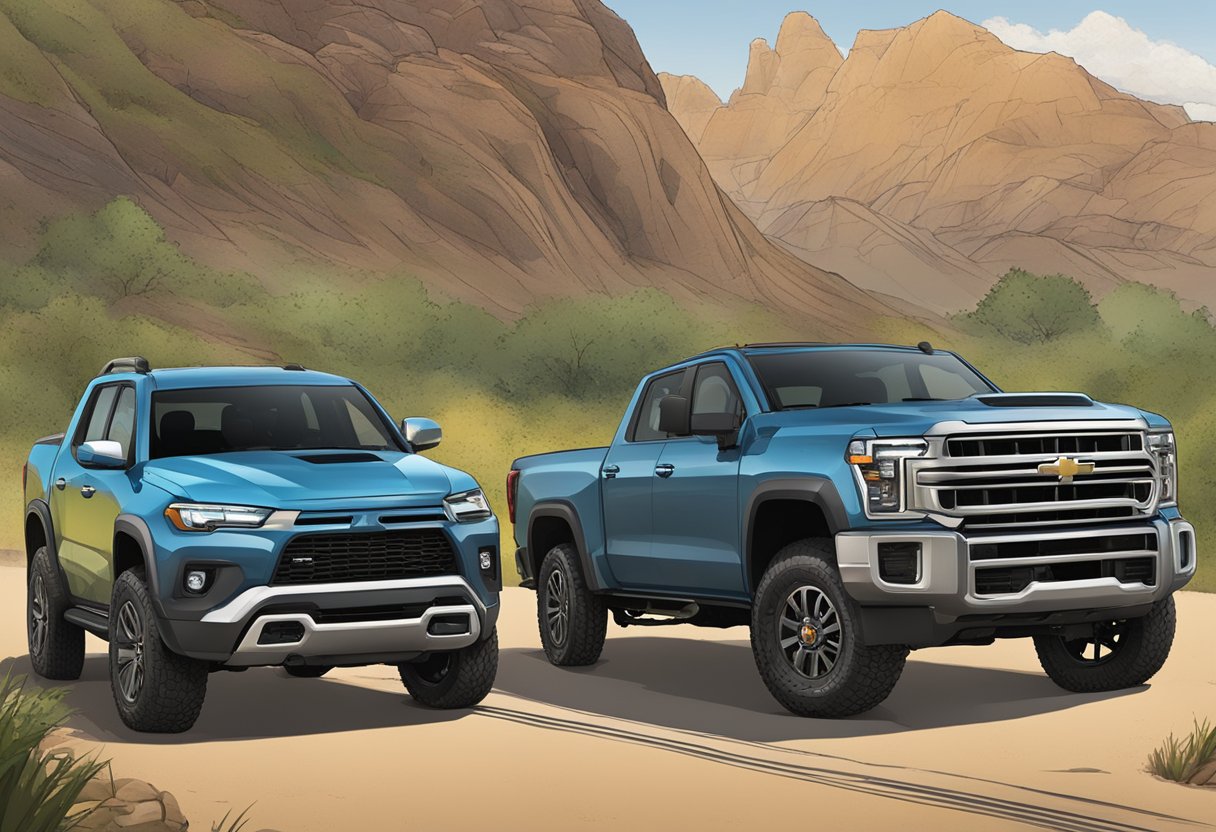When it comes to purchasing a vehicle, one of the most important decisions you will have to make is whether to choose a 4×2 or a 4×4.
While both types of vehicles have their advantages and disadvantages, understanding the differences between them is crucial in making the right choice for your needs.
A 4×2 vehicle, also known as a two-wheel drive, is a vehicle that only has two wheels powered by the engine.
This means that the vehicle is propelled by either the front wheels or the rear wheels, but not both.
On the other hand, a 4×4 vehicle, also known as a four-wheel drive, is a vehicle that has all four wheels powered by the engine.
This allows for better traction and control in off-road conditions and adverse weather.
When deciding between a 4×2 and a 4×4 vehicle, it is important to consider the terrain and weather conditions in which you will be driving.
A 4×2 vehicle may be suitable for regular city driving, while a 4×4 vehicle may be necessary for off-road adventures or driving in areas with heavy snow or rain.
Understanding the differences and benefits of each type of vehicle can help you make an informed decision and choose the right vehicle for your lifestyle.
Defining 4×2 and 4×4 Vehicles
When it comes to understanding the differences between 4×2 and 4×4 vehicles, it’s important to first define what each of these terms means.
A 4×2 vehicle, also known as a two-wheel drive vehicle, is a vehicle that has power delivered to only two of its wheels.
This means that either the front two wheels or the rear two wheels receive power from the engine, while the other two wheels simply roll along.
This type of vehicle is typically less expensive and more fuel-efficient than a 4×4 vehicle.
On the other hand, a 4×4 vehicle, also known as a four-wheel drive vehicle, is a vehicle that has power delivered to all four of its wheels.
This means that all four wheels receive power from the engine, which can provide better traction and handling in off-road or slippery conditions.
This type of vehicle is typically more expensive and less fuel-efficient than a 4×2 vehicle.
It’s important to note that not all 4×4 vehicles are created equal.
Some 4×4 vehicles have a part-time system, which means that the driver can switch between two-wheel drive and four-wheel drive as needed.
Other 4×4 vehicles have a full-time system, which means that all four wheels are always receiving power from the engine.
Understanding the differences between 4×2 and 4×4 vehicles can help you make an informed decision when it comes to purchasing a vehicle that suits your needs.
Whether you prioritize fuel efficiency or off-road capabilities, there is a vehicle out there that can meet your needs.
Mechanical Differences
Drivetrain Configurations
The main difference between 4×2 and 4×4 vehicles is the number of wheels that receive power from the engine.
In a 4×2 vehicle, power is only sent to two of the wheels, usually the front or the back, while the other two wheels simply roll along.
In contrast, a 4×4 vehicle sends power to all four wheels, providing better traction and control in challenging driving conditions.
Transfer Case Functionality
Another key difference is the presence of a transfer case in 4×4 vehicles.
The transfer case is a component that allows the driver to switch between two-wheel drive and four-wheel drive modes.
In 4×4 mode, the transfer case distributes power to both the front and rear axles, allowing for maximum traction and control in off-road or slippery conditions.
In two-wheel drive mode, the transfer case disengages the front axle, reducing wear and tear on the drivetrain and improving fuel efficiency.
Overall, the mechanical differences between 4×2 and 4×4 vehicles can have a significant impact on their performance and capabilities.
While 4×2 vehicles are generally more fuel-efficient and less expensive, 4×4 vehicles offer superior traction and control in challenging driving conditions.
Ultimately, the choice between a 4×2 and 4×4 vehicle will depend on your individual needs and preferences.
Performance Comparison
When it comes to performance, there are some key differences between 4×2 and 4×4 vehicles.
In this section, we’ll take a closer look at how these two types of vehicles compare in terms of on-road handling and off-road capabilities.
On-Road Handling
In general, 4×2 vehicles tend to have better on-road handling than 4×4 vehicles.
This is because 4×2 vehicles are lighter and have fewer moving parts, which makes them more nimble and responsive on the road.
Additionally, 4×2 vehicles typically have a lower center of gravity, which helps to improve stability and handling.
On the other hand, 4×4 vehicles are designed to handle rough terrain and adverse weather conditions, which means that they may not handle as well on smooth, paved roads.
4×4 vehicles tend to be heavier and have a higher center of gravity, which can make them feel less stable on the road.
However, many modern 4×4 vehicles are equipped with advanced suspension systems and other features that help to improve on-road handling.
Off-Road Capabilities
When it comes to off-road capabilities, 4×4 vehicles have a clear advantage over 4×2 vehicles.
4×4 vehicles are designed to handle rough terrain, steep inclines, and adverse weather conditions, which makes them ideal for off-road adventures.
4×4 vehicles are equipped with four-wheel drive systems that allow them to distribute power to all four wheels, which helps to improve traction and stability.
In contrast, 4×2 vehicles are not designed for off-road use and may struggle to navigate rough terrain.
4×2 vehicles are typically equipped with two-wheel drive systems that only send power to two wheels, which can make them more prone to getting stuck or losing traction on uneven surfaces.
Overall, the choice between a 4×2 and 4×4 vehicle will depend on your specific needs and preferences.
If you primarily drive on smooth, paved roads and don’t plan on doing any off-road driving, a 4×2 vehicle may be the better choice for you.
However, if you enjoy off-road adventures and need a vehicle that can handle rough terrain and adverse weather conditions, a 4×4 vehicle may be the way to go.
Advantages and Disadvantages
When choosing between a 4×2 and a 4×4 vehicle, it’s important to consider the advantages and disadvantages of each option.
Here are some factors to keep in mind:
Fuel Efficiency
One of the main advantages of a 4×2 vehicle is its fuel efficiency.
Since it only has two-wheel drive, it requires less power to operate and therefore uses less fuel.
This can be especially beneficial for those who do a lot of city driving or have a long commute.
On the other hand, 4×4 vehicles tend to be less fuel-efficient due to their more complex drivetrain and increased weight.
Cost Considerations
Another advantage of 4×2 vehicles is their lower cost compared to 4×4 vehicles.
Since they have fewer components, they are generally less expensive to manufacture and purchase.
Additionally, 4×2 vehicles tend to have lower maintenance costs since they have fewer parts that can wear out or break down.
However, if you frequently drive in rough terrain or need a vehicle with greater towing capacity, a 4×4 vehicle may be worth the extra cost.
Maintenance and Repairs
When it comes to maintenance and repairs, 4×2 vehicles are generally easier and less expensive to service.
Since they have fewer components, there are fewer things that can go wrong.
Additionally, 4×2 vehicles tend to have simpler drivetrains, which means there are fewer parts that need to be serviced or replaced.
However, if you live in an area with harsh weather conditions or frequently drive on rough terrain, a 4×4 vehicle may be more durable and require less maintenance in the long run.
Overall, the choice between a 4×2 and a 4×4 vehicle depends on your specific needs and preferences.
Consider factors such as fuel efficiency, cost, and maintenance when making your decision.
Choosing the Right Vehicle for Your Needs
When it comes to choosing between a 4×2 and a 4×4 vehicle, it’s important to consider your specific needs and usage.
Here are some factors to keep in mind:
Lifestyle and Usage
Your lifestyle and usage will play a big role in determining which type of vehicle is right for you.
If you frequently drive on rough terrain or in inclement weather, a 4×4 vehicle may be the better choice.
For example, if you live in an area with heavy snowfall or frequently go off-roading, a 4×4 vehicle can provide added traction and stability.
On the other hand, if you primarily use your vehicle for commuting or running errands on paved roads, a 4×2 vehicle may be sufficient.
They tend to be more fuel-efficient and less expensive than 4×4 vehicles, making them a good choice for those on a budget.
Climate and Terrain
The climate and terrain in your area should also be taken into consideration.
If you live in an area with mild weather and flat terrain, a 4×2 vehicle may be suitable.
However, if you live in an area with steep hills, rocky terrain, or harsh weather conditions, a 4×4 vehicle may be necessary.
It’s also important to consider the type of driving you’ll be doing.
If you frequently drive on highways and city streets, a 4×2 vehicle may provide a smoother ride.
However, if you frequently drive on unpaved roads or off-road, a 4×4 vehicle may be better equipped to handle the terrain.
Ultimately, the choice between a 4×2 and a 4×4 vehicle comes down to your specific needs and usage.
Consider your lifestyle, climate, and terrain to determine which type of vehicle is right for you.
As an Amazon Associate we earn from qualifying purchases.







